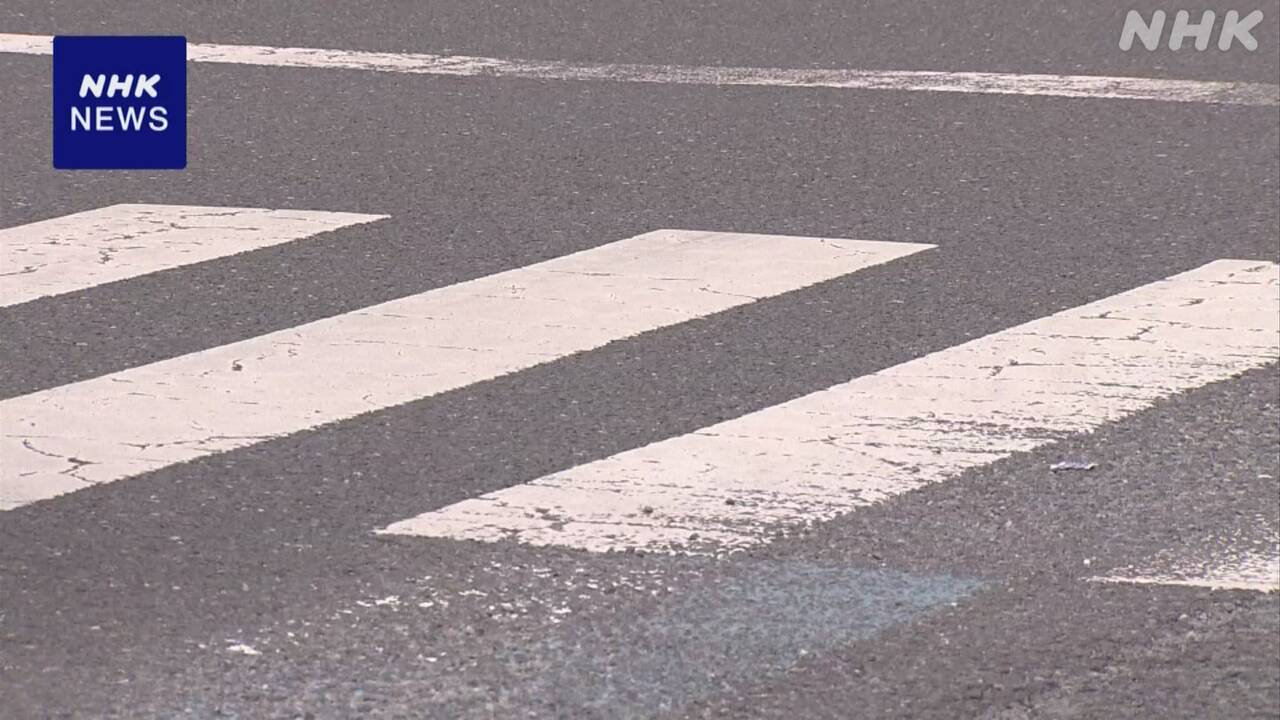When the National Police Agency analyzed approximately 2,600 traffic accidents that occurred at crosswalks without traffic lights over the past five years, it was found that less than 10% of cars slowed down before the crosswalk. The National Police Agency has decided to call on drivers to be ``aware of giving priority to pedestrians'' as one of the key points of the spring nationwide traffic safety campaign.
According to the National Police Agency, 2,841 pedestrians were killed or seriously injured when they were hit by cars while crossing a crosswalk last year, an increase of 174 from the previous year.
The National Police Agency analyzed 2,627 fatal or serious accidents in which pedestrians collided with vehicles traveling straight at crosswalks without traffic lights over the five-year period up to last year, and found that 147 cars slowed down before the crosswalk. It remained at the same level and was less than 10%.
Additionally, at the time the driver noticed a pedestrian crossing, more than 60% of the vehicles were traveling at speeds of 31 km/h or higher, which is considered to increase the fatality rate for pedestrians.
The Road Traffic Act states
that unless it is clear that there are no pedestrians attempting to cross a crosswalk, you must drive at a speed that allows you to stop before there are
pedestrians crossing or attempting to cross the crosswalk. You are required to stop in front of it when you are there.
The National Police Agency will call on drivers to ``fully prioritize pedestrians first'' as one of the key points in the spring national traffic safety campaign that starts on the 6th of next month.
JAF (Japan Automobile Federation) is conducting a nationwide survey on the percentage of cars that stop when pedestrians are about to cross at crosswalks without traffic lights.
Last year, a survey of more than 7,000 vehicles across the country found that the national average was 45.1%, with the
lowest suspension rate
in Niigata prefecture at 23.2%,
followed by
Saga prefecture at 26.2%
, and Fukui and Osaka prefectures. It was 26.7%. On the other hand,
Nagano Prefecture
had the highest rate at 84.4%,
followed by
Ishikawa Prefecture at 76.4%
, and Tochigi Prefecture at 74.8%.
Although the national average of the stop rate is increasing year by year, JAF says, ``In order to change the situation where many cars are unable to stop at crosswalks without traffic lights, we need the consideration of each individual.''
[Percentage of cars that stopped temporarily by prefecture]
▽Hokkaido 29.0%
▽Aomori 47.4%
▽Iwate 56.2%
▽Miyagi 51.9%
▽Fukushima 60.8% ▽Akita
52.1 % ▽
Yamagata 53.6%
▽Niigata 23.2%
▽Nagano 84.4%
▽Ibaraki 27.6%
▽Tochigi 7 4.8%
▽Gunma 41.1%
▽Saitama 38.9%
Chiba 31.9%
Tokyo 39.6%
Kanagawa 29.1%
Yamanashi 61.0%
Toyama 50.0%
Ishikawa 76.4 % Fukui
26.7 % Gifu
65.4
% Shizuoka
63.9% Aichi 61.2%
Mie 51.3%
▽Shiga 46.3%
▽Kyoto 34.6%
▽Osaka 26.7%
▽Hyogo 52.0%
▽Nara 48.1% ▽Wakayama
30.1% ▽
Tottori 50.0%
▽ Shimane
53.0% ▽
Okayama 47.8%
▽Hiroshima 48.5% ▽Yamaguchi 48.5%
▽Tokushima 36.7%
▽Kagawa 39.1%
▽Ehime 58.5%
▽Kochi 35.3%
▽Fukuoka 58.1%
▽Saga 26.2%
▽Nagasaki 42.5 % ▽Kumamoto
66.1% ▽
Oita
31.1%
▽Miyazaki 63.6% ▽Kagoshima 42.8%
▽Okinawa 31.1%

